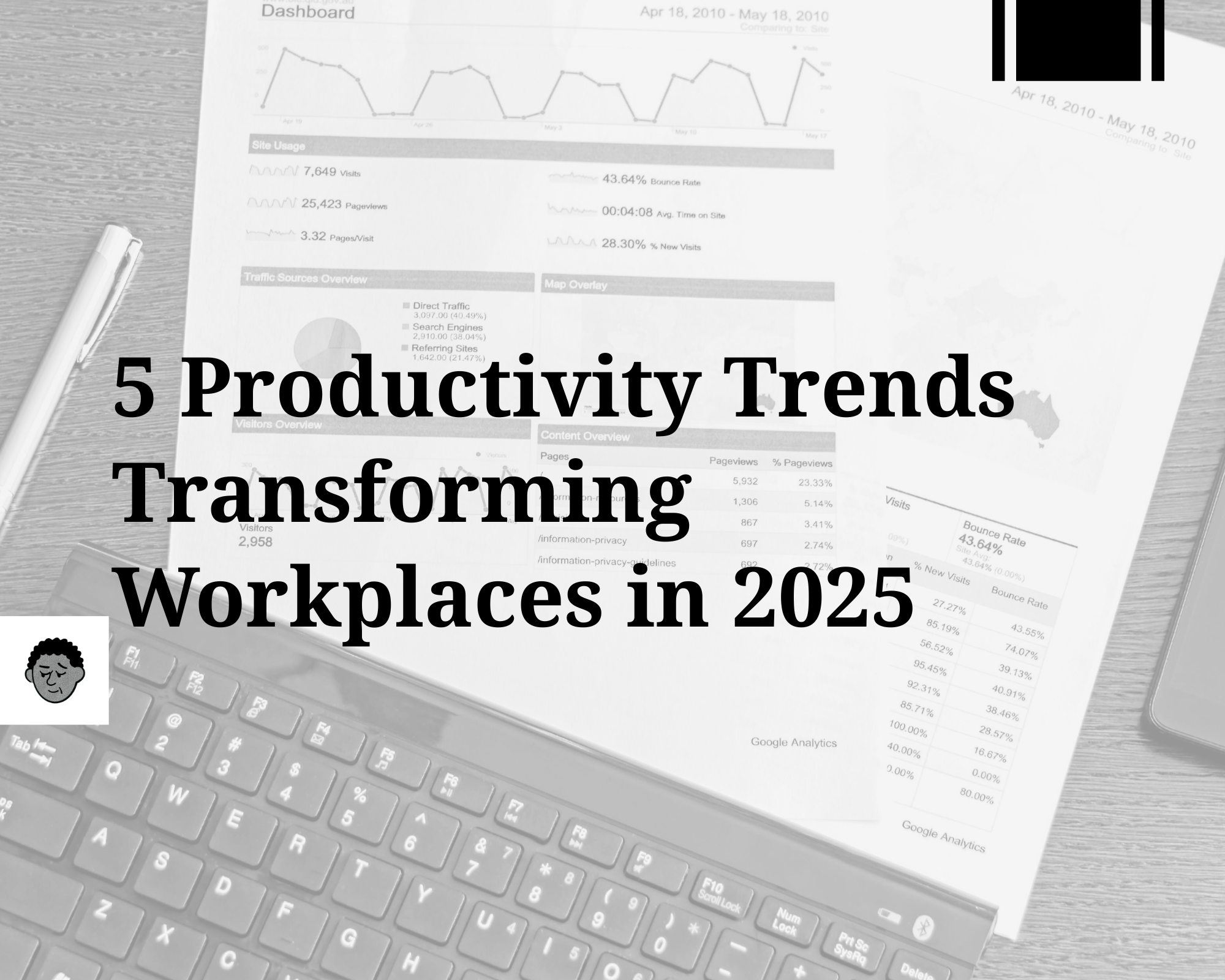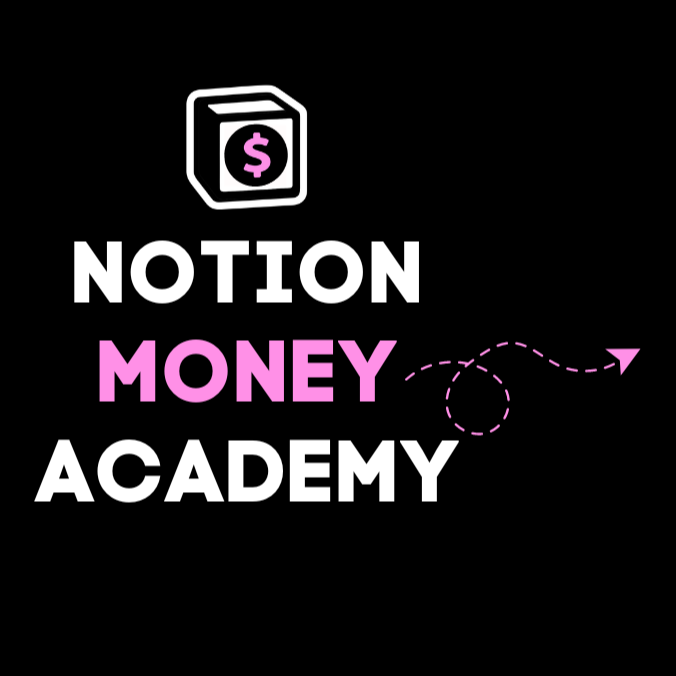Your cart is currently empty!

How to Leverage 5 Productivity Trends That Are Changing Workplaces

Workplace productivity is being fundamentally transformed in 2025. Recent data shows workdays are now 36 minutes shorter while output has increased by 2%. This transformation is driven by AI integration, flexible work arrangements, and a focus on employee well-being. According to Microsoft WorkLab research, these shifts are creating unprecedented productivity opportunities for forward-thinking organizations.

1. AI-Powered Work and Automation
Stanford’s AI Index 2025 reports 78% of organizations now use AI (up from 55% in 2023), while ActivTrak data shows 58% of employees use AI tools a 107% increase year-over-year. Microsoft’s WorkLab found 82% of leaders plan to deploy AI “digital labor” in the next 12-18 months.
Companies like HP are using AI to create personalized work environments, while McKinsey and IBM estimate productivity gains in the trillions. However, Gartner warns that “AI-first” approaches without guardrails can hinder efficiency inexperienced AI users spend 27 minutes less in focused work daily.
Early adopters are achieving 3-4× ROI on their AI investments by letting AI handle routine tasks while humans focus on creative, high-value work.

2. Hybrid and Flexible Work
Approximately half of professionals prefer hybrid schedules, with 25% wanting fully remote options. ActivTrak found remote employees gain about 30 minutes of productive work daily compared to office-based colleagues.
Four-day workweek trials continue to expand globally. In the UK, a major pilot with 61 companies showed 54 maintained the shorter schedule after completion, reporting stable productivity and reduced burnout. Tokyo’s municipal government launched a 4-day week in April 2025 to boost well-being.
A Welsh housing cooperative allowed 240 workers to choose their schedules, maintaining service levels while improving motivation. The data conclusively shows that flexibility doesn’t reduce productivity it often enhances it.

3. Optimized Work Patterns
Focus sessions have lengthened from 20 to 24 minutes a 20% improvement in sustained concentration. Meanwhile, office environments with frequent interruptions saw an 8% reduction in focus time.
London’s Waterwise team implemented formal “uninterrupted work” periods with strict rules: no emails outside designated times and 30-minute meeting caps. ActivTrak reports a 70% increase in employees maintaining “healthy work patterns” the highest in three years.
Organizations are implementing meeting-free mornings, blocked calendar periods, and analytics that track productive output rather than hours worked. This shift toward outcome-based performance proves that working smarter consistently outperforms working longer.
4. Well-Being as Productivity Catalyst
Research cited by Workhuman shows teams with strong recognition and well-being programs have up to 90% lower burnout rates. The UK and Iceland trials of shorter workweeks consistently report improved mental health alongside sustained productivity.
Multinational companies are implementing global well-being initiatives, from Asia-Pacific lunchtime yoga to European “digital sabbaths.” North American tech firms are pioneering unlimited vacation policies and even “adult sleep pods” in offices.
The connection between well-being and productivity is now undeniable. Burnout harms not just employees but directly impacts innovation, turnover, and output quality. Progressive organizations recognize that supporting worker wellness is strategically sound business practice.

5. Personalization and Skill Empowerment
Deloitte and other leading firms report that personalized work environments significantly enhance productivity. Gartner notes many organizations are “shredding the paper ceiling” by removing degree requirements and building in-house training programs.
A Japanese bank implemented AI-driven task assignment, freeing bankers to focus on relationship building, while a European retailer uses analytics to allow staff choice in shifts and task mix, improving both satisfaction and operational efficiency.
When work aligns with personal strengths and development goals, engagement and efficiency naturally increase. Advanced tools and analytics enable organizations to understand individual work patterns and preferences, allowing for customized task assignments and adaptive learning paths.

Conclusion
The productivity trends of 2025 demonstrate that working smarter trumps working harder. Organizations embracing AI augmentation, flexible models, focus-optimized schedules, well-being initiatives, and personalized approaches are seeing remarkable gains with fewer hours worked.
As Work Design Magazine notes, the most productive workplaces balance automation with human needs, redesign schedules around natural productivity rhythms, and invest in holistic employee development.
FAQs
What are the top productivity trends in the workplace for 2025, and how can businesses leverage them?
The biggest productivity trends in 2025 include AI-powered tools, hybrid work models, human-centric leadership, flexible work schedules, and redesigned office spaces.
Businesses can leverage them by:
- Designing wellness-focused workspaces with biophilic elements.
- Investing in AI-driven automation for repetitive tasks.
- Supporting hybrid work with digital collaboration platforms.
- Training managers in empathetic, human-first leadership.
- Testing flexible schedules such as four-day workweeks.
How can organizations use AI-driven tools to boost productivity in modern workplaces?
AI tools improve productivity by automating routine tasks, enhancing decision-making, and personalizing workflows. For example:
- AI chatbots handle customer support.
- Predictive analytics forecast demand and guide strategy.
- AI project management platforms optimize scheduling and resource use.
- Generative AI speeds up content creation and reporting.
By integrating AI into daily operations, teams save hours each week and focus more on creative, high-value work.
What are the benefits of adopting a four-day workweek, and how does it improve productivity?
A four-day workweek helps employees achieve better work-life balance, reduces burnout, and increases focus. Studies show many companies maintain or even improve output because:
- Employees are more engaged during shorter workweeks.
- Time is managed more efficiently with fewer distractions.
- Companies report higher retention rates and improved morale.
It’s not just about working less it’s about working smarter and more effectively.
Why is human-centric leadership important in the era of automation, and how does it improve productivity?
As automation takes over routine tasks, human-centric leadership ensures that workplaces remain connected, inclusive, and motivating. It boosts productivity by:
- Encouraging trust and collaboration within teams.
- Supporting mental health and well-being, which reduces absenteeism.
- Fostering continuous learning and adaptability.
- Inspiring creativity by valuing human insight alongside AI tools.
In short, people-first leaders drive performance in tech-enabled workplaces.
What workplace design trends (like biophilic or immersive workspaces) enhance productivity and employee well-being?
Modern office design is shifting toward well-being and focus. Trends include:
- Biophilic design → integrating natural light, plants, and outdoor views.
- Immersive workspaces → using tech-enabled environments that reduce distractions.
- Quiet zones & collaboration hubs → balancing deep work with teamwork.
- Ergonomic furniture → supporting physical comfort.
These designs help employees feel healthier, more engaged, and more productive.
How can companies effectively implement hybrid work models to increase productivity and collaboration?
To make hybrid work successful, companies should:
- Provide digital collaboration tools (like Slack, Notion, or Microsoft Teams).
- Set clear policies on flexibility and accountability.
- Create meeting strategies that include both in-office and remote employees equally.
- Offer support for home office setups to ensure consistent productivity.
When done right, hybrid work combines the best of remote flexibility with in-person collaboration.
What is a Results-Only Work Environment (ROWE) and how does focusing on outcomes, not hours, boost productivity?
A ROWE (Results-Only Work Environment) is a workplace where employees are evaluated based on results delivered rather than time spent working.
Benefits include:
- Productivity increases because people focus on impact, not clock-watching.
- Higher autonomy and accountability.
- Improved morale since employees control their schedules.
- Reduced presenteeism (working for the sake of showing up).
How do AI-familiar and AI-literate employees contribute to workplace productivity?
- AI-familiar employees → know how to use basic AI tools and save ~6.3 hours per week.
- AI-literate employees → understand AI’s deeper capabilities and save ~9 hours weekly.
Together, they: - Automate repetitive tasks.
- Make faster, data-driven decisions.
- Free up time for innovation and problem-solving.
Building AI literacy across teams creates a future-ready workforce that maximizes productivity gains.



